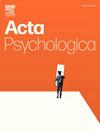通过依恋和情感不安全感将家庭暴力与儿童创伤症状联系起来
IF 2.1
4区 心理学
Q2 PSYCHOLOGY, EXPERIMENTAL
引用次数: 0
摘要
依恋理论和情感安全理论提供了不同但兼容的解释,以解释儿童在家庭虐待和忽视(CAN)和亲密伴侣暴力(IPV)中成长的后果。目的探讨依恋安全和情感不安全感在解释CAN和IPV与儿童创伤后应激症状(PTSS)之间的关联方面的独特贡献。研究了依恋安全和情绪不安全感在CAN、IPV和ptsd之间的中介作用。参与者和背景参与者是718名荷兰父母,报告他们的孩子(3-12岁)和186名儿童(8-18岁)的自我报告。他们是通过儿童保护机构联系上的。方法完成问卷调查,包括CAN、IPV、依恋安全感、情绪不安全感和创伤后应激障碍。采用结构方程模型,分别从父亲(1)和母亲(2)的角度、儿童对父亲(3)和母亲(4)的角度进行了依恋安全的中介分析。结果CAN和IPV通过父亲的情感不安全感和依恋安全间接影响创伤后应激障碍(B = 0.22, p <;0.05, B = 0.04, p <;.05)和母亲(B = 0.03, p <;.01和B = 0.15, p <;0.05)的观点是显著的。儿童视角对父亲和母亲的间接影响仅在IPV中显著(B = 0.09, p <;. 01)。情绪不安全感显然是一个更一致的中介。结论:研究结果强调了家庭层面的关系动态,而不是二元视角的家庭有CAN和IPV。情绪安全理论对于理解这些家庭中儿童的心理需求可能特别相关。本文章由计算机程序翻译,如有差异,请以英文原文为准。
Linking family violence and children's trauma symptoms through attachment and emotional insecurity
Background
Attachment theory and emotional security theory offer distinct but compatible accounts to explain the consequences for children growing up in families with child abuse and neglect (CAN) and intimate partner violence (IPV).
Objective
We examined the unique contributions of attachment security and emotional insecurity in explaining associations between CAN and IPV, on the one hand, and children's post-traumatic stress symptoms (PTSS), on the other. We examined to what extent attachment security and emotional insecurity mediate the relationship between CAN and IPV and PTSS.
Participants and setting
Participants were 718 Dutch parents reporting about their children (3–12 years) and 186 children (8–18 years) self-reporting. They were contacted through child protection services.
Methods
Participants completed questionnaires about CAN, IPV, attachment security, emotional insecurity, and PTSS. Using structural equation modelling, four mediation analyses were conducted: attachment security measured from fathers' (1) and mothers' (2) perspectives, and children's perspectives on fathers (3) and mothers (4).
Results
The indirect effects of CAN and IPV on PTSS through emotional insecurity and attachment security from father's (B = 0.22, p < .05 and B = 0.04, p < .05, respectively) and mother's (B = 0.03, p < .01 and B = 0.15, p < .05, respectively) perspectives were significant. Indirect effects from children's perspectives on fathers and mothers were significant only for IPV (both B = 0.09, p < .01). Emotional insecurity clearly was a more consistent mediator.
Conclusions
Findings emphasize a family-level rather than a dyadic perspective on the relationship dynamics in families with CAN and IPV. Emotional security theory may be particularly relevant for understanding the psychological needs of children in these families.
求助全文
通过发布文献求助,成功后即可免费获取论文全文。
去求助
来源期刊

Acta Psychologica
PSYCHOLOGY, EXPERIMENTAL-
CiteScore
3.00
自引率
5.60%
发文量
274
审稿时长
36 weeks
期刊介绍:
Acta Psychologica publishes original articles and extended reviews on selected books in any area of experimental psychology. The focus of the Journal is on empirical studies and evaluative review articles that increase the theoretical understanding of human capabilities.
 求助内容:
求助内容: 应助结果提醒方式:
应助结果提醒方式:


